Zhidong Zhang — a Chinese born-and-raised photographer currently based in Boston — studied Applied Mathematics before pivoting to an MFA in photography after his father gifted him a DSLR camera in his junior year. As a queer young man, playing with the parameters of selfhood was vital — especially after having been impeded from doing so in his native country.
Both social norms and governmentally-regulated restrictions in China limit the themes and vocabulary that can be explicitly expressed when it comes to queerness. His series “Natural Impersonation”, a meditative study on re-constructing one’s identity, weaves together intimate portraiture and still life. Zhidong visualises selfhood as oblique interactions and elliptical interstices: intertwined silhouettes on a craggy rock, faces streaked with white paint, Hello Kitty tattoos and bright nail polish. “I found myself interested less in the subjects themselves than the referential tableaux and the representational system that frame them,” Zhang explained in an artist statement.
Currently on view at Le CRP/— an exhibition space halfway between Paris and Brussels — Natural Impersonation is part of the exhibition Bi Hu Suo: On Emerging Chinese Photography (open until August 7), alongside three other Chinese photographers: Zheng Andong, Ye Wuji, and Wang Yingying.
We spoke with Zhidong and discussed the importance of unlearning, how he began to dream up new norms, and Judith Butler fandom.
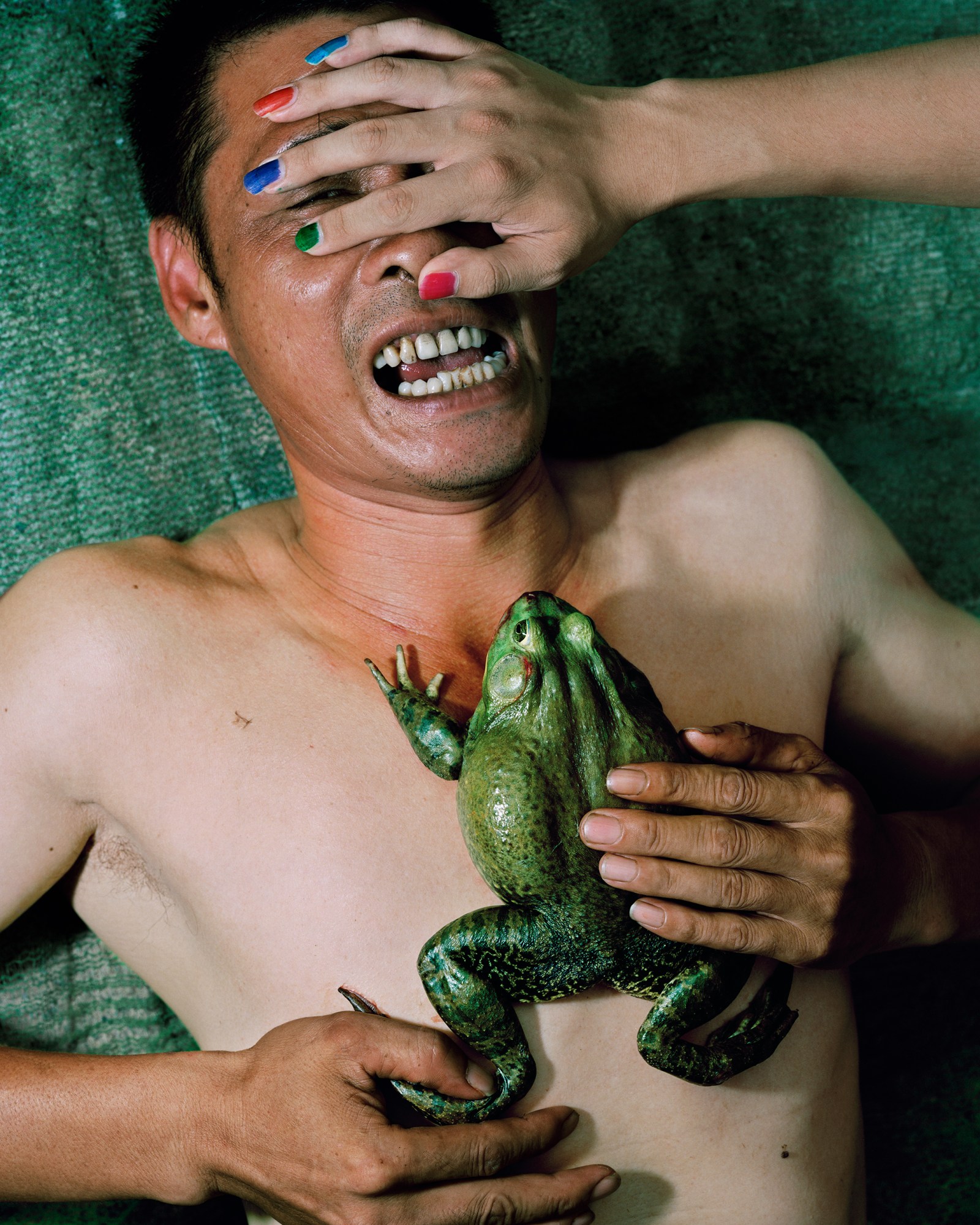
Firstly, tell us about your path to photography.
My whole life was in China before I applied to grad programs in the US. It was a crazy decision, because everyone was just so against it. I knew nothing about photography, about art. None of my family members are artists but I was determined, and that’s what led me to where I am now. I graduated in 2020. Grad school really helped me contextualise and conceptualise my ideas. I realised I can express a connection to reality, instead of just capturing reality itself.
That’s a meaningful distinction. And, more generally, there’s a liberating quality to being in a different country when you’re in an exploratory phase — it’s easier to experiment.
100%. That’s a really important part of my practice: the freedom to express my culture, my identity, my sexuality. That’s part of the work. And I can’t do that in China, because of the censorship and the societal and familial suppression all the time. I wanted to get away from my homeland, to be in the country that has “freedom” — even though freedom comes with a price here as well.

This exhibition has the subtitle “On Emerging Chinese Photography.” Do you feel like there is a scene or movement that you’re a part of?
There’s a younger generation of artists from China studying abroad — sometimes they go back to China to make work there and really struggle staying. I think that what we’re doing is really exciting; we’re trying to challenge the norms, even though there’s so much pressure. The point is just to keep trying, and keep opening our eyes to all these possibilities.
Although coming up against institutional structures can feel like a losing game, do you feel hopeful for change?
It’s really mixed. I do admire artists back in China. I sometimes feel so helpless, in that sense. A Chinese curator from a photo festival reached out to me during the pandemic. The festival itself is affiliated with the local government, so the censorship seems extra strict compared to other independent institutions. During the first round of the image selection, a few overtly queer pictures didn’t make it (same-sex bodies touching, exposed skin). I had to tweak and adjust my artist statement to basically exclude any “queer” or “gay” references; instead wording it in a more opaque way.
Most of the time, I’m negotiating with my own upbringing through an active reconfiguration, which is inseparable from the structure of censorship. One silver lining, in the midst of all the frustrations, is that queer identities in China have become increasingly visible — the government’s elusive policy towards homosexuality actually provides space for the formation of queer community and activist networks. And the censorship system forces artists to think in a more innovative way, to circumvent the so-called guidelines, and crack open the rigid codes to define what queerness is supposed to be. It’s the perseverance of generations of artists I find most powerful and inspiring.
The government controls the media. We still don’t have access to YouTube or Google. Some people from China have different resources, but they have to unlearn lots of things.
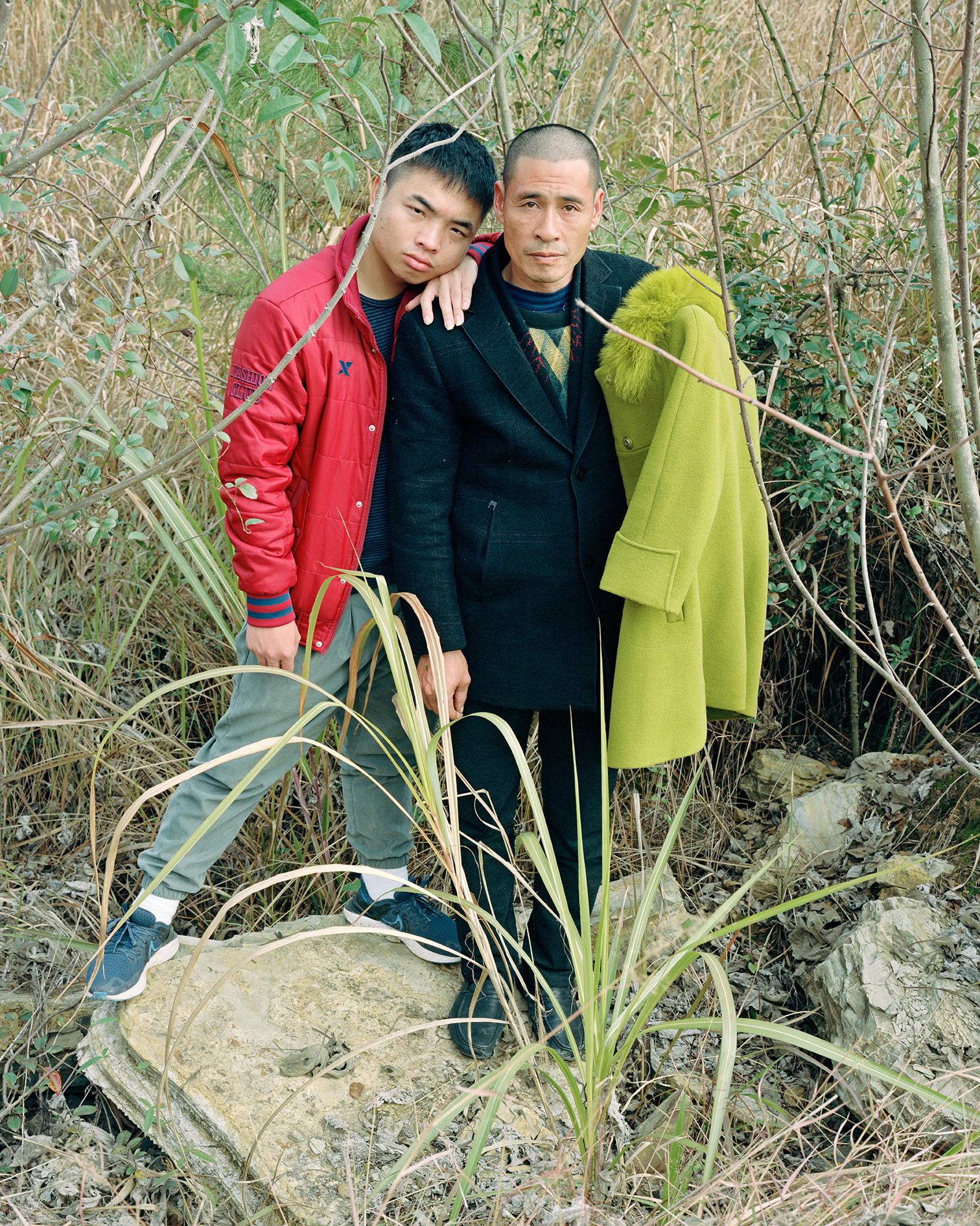
Even beyond those particular circumstances, unlearning is a huge part of everyone’s process: on a human level, on an artistic level. Were there important creatives, queer or otherwise, whose work provided an important precedent for you — or even helped you unlearn/relearn?
For photographers, I’ve always been a huge fan of Man Ray, Minor White, Jimmy DeSana, Deana Lawson, Wolfgang Tillmans, Ren Hang and Rineke Dijkstra. And then directors including Pedro Almodovar, Jane Campion, Wong Kar-Wai, Apichatpong Weerasethakul and Mia Hansen-Løve. In terms of writers, the likes of James Baldwin, Audre Lorde, Ocean Vuong, Michelle Zaunner and Judith Butler of course — her gender and queer theory has been really far-reaching for me.
Some of your images are really enigmatic, especially those that feature objects. Could you talk about the way these complement the portraits?
When I began making pictures, I started in the studio with objects that I collected from thrift stores. That’s my hobby – I’m a hoarder. I think about how to make them interact with the photographic surface and then with the viewer. There is some narrative in the images, but not necessarily linear. The simple idea is just to look at one thing that nobody has ever looked at before. How I can bring the attention there? The objects I collected sat until they spoke to me; had a sort of conversation with me. Like imaginary friends.
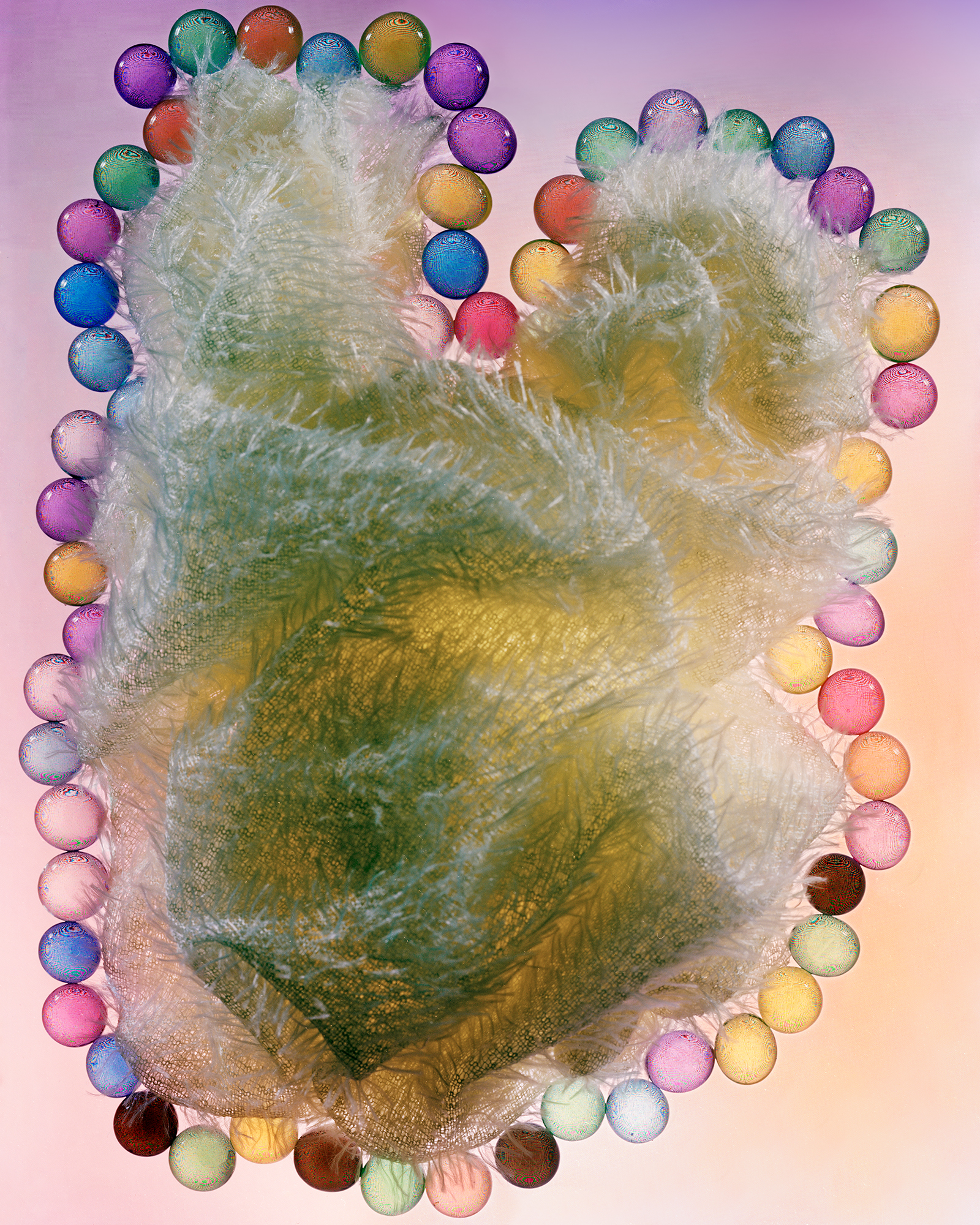
The title “Natural Impersonation” is so loaded with multiplicity. It speaks to displacement and fitting in when your roots are elsewhere, as well as navigating heteronormative expectations and disassembling them. Can you talk about how you landed on the title?
When I was thinking of the working title for the series, I really didn’t know how to encapsulate what I was trying to say. Often, I find language so limiting compared to visual language. When I looked at the images I made, I found them to be the opposite of natural. Something that didn’t fit the norm. The ideas that I am trying to express in these photographs are about proximity to an alternative reality, one that exists outside of the real. It’s my own imagination; my own narrative of an almost utopian world without all those hierarchies, hegemonic masculinity, and patriarchal structure. I’m saying: this is natural — why would it not be?
The word impersonation is about how photography is kind of a performance; impersonating some sort of reality. I’m also channeling this queer theory of how gender is just, you know, a social construct. Placing the words ‘natural’ and ‘impersonation’ together has its own conflict. I often juxtapose elements that don’t really fit together at all. But then, why can’t they fit together? Why do we have all these rules to limit our imagination? The series investigates that.
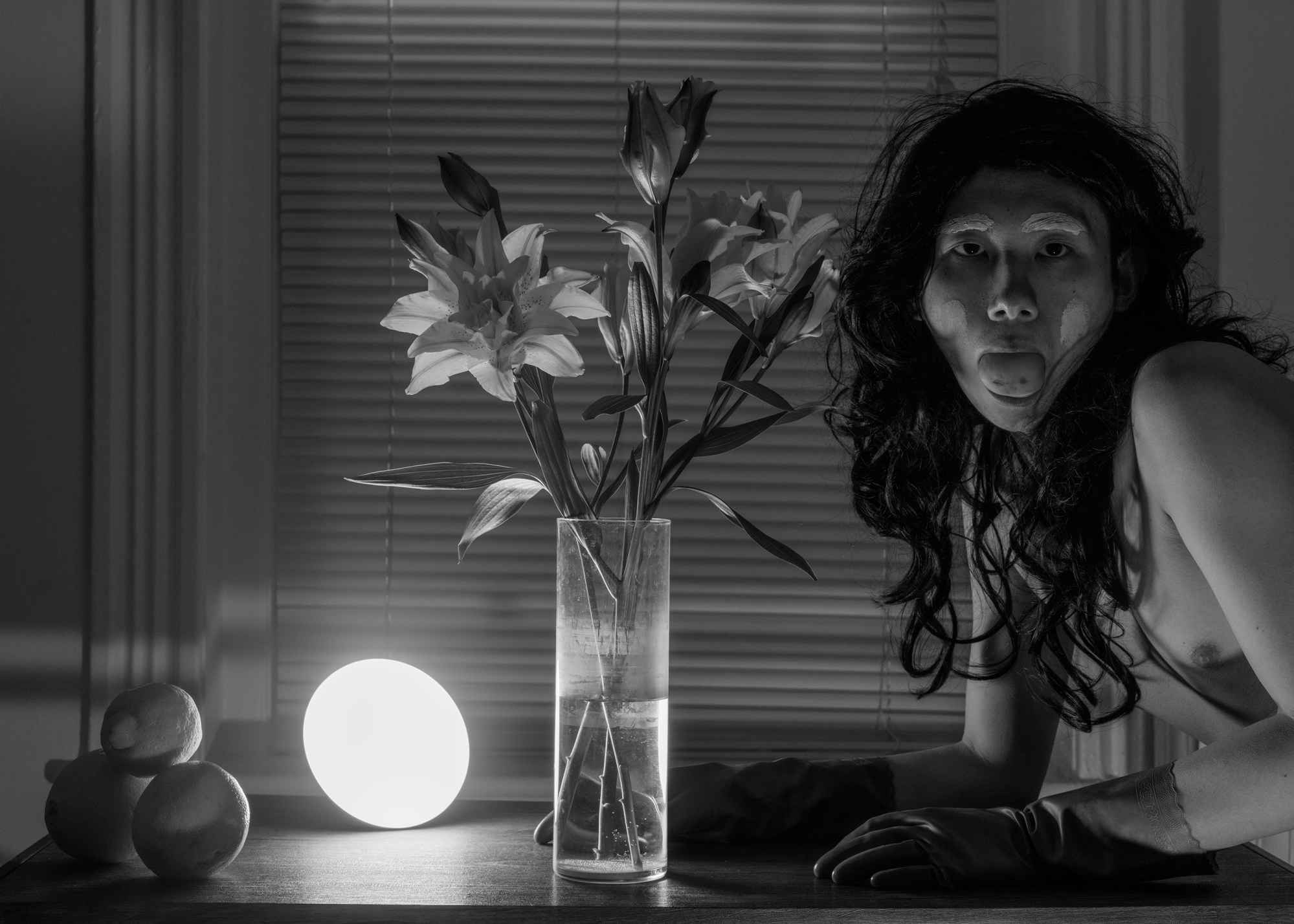

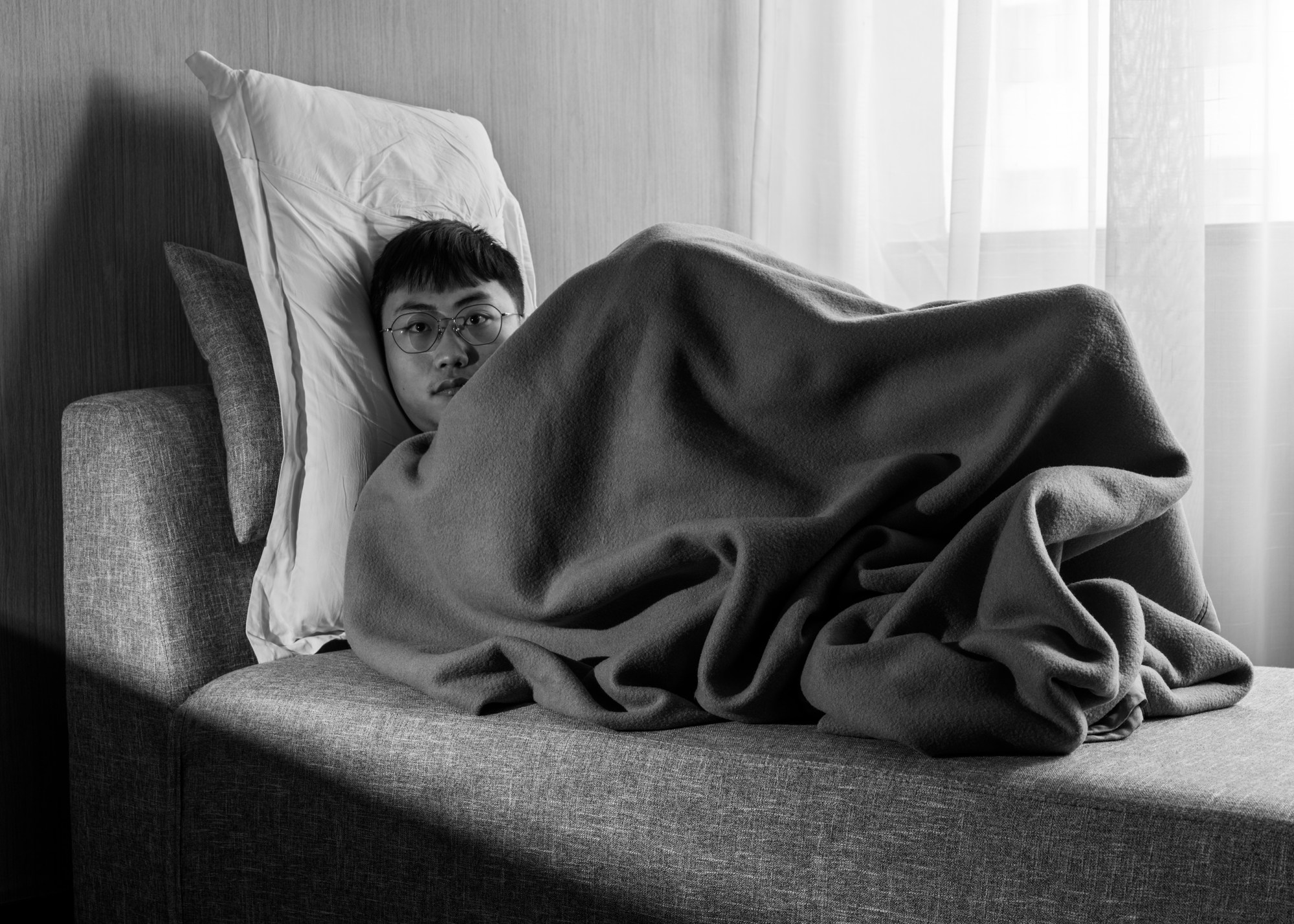
Credits
All images courtesy of Zhidong Zhang


